
- Episode.8 「世界で評価される馬革専業タンナー『新喜皮革』」
- Episode.7 「ロマンと科学で紡ぐ”XX”の遺伝子 Vol.4」
- Episode.6 「ロマンと科学で紡ぐ”XX”の遺伝子 Vol.3」
- Episode. 5: The DNA of “XX,” Interwoven with a Spirit of Adventure and Science – Vol. 2
- Episode.5 「ロマンと科学で紡ぐ"XX"の遺伝子 Vol.2」
- Episode.4 Starting “XX” Reproducing Project. Vol.1
- Episode.4 「ロマンと科学で紡ぐ"XX"の遺伝子 Vol.1」
- Episode. 3 Vintage Wool Blanket Making Revives in Modern Times Vol. 3
- Episode.3 「現代に蘇るヴィンテージウール Vol.3」
- Episode.2 Vintage Wool Blanket Making Revives in Modern Times Vol. 2
- Episode.2 「現代に蘇るヴィンテージウール Vol.2」
- Episode.1 Vintage Wool Blanket Making Revives in Modern Times Vol. 1
- Episode.1 「現代に蘇るヴィンテージウール Vol.1」
Episode.1 Vintage Wool Blanket Making Revives in Modern Times Vol. 1
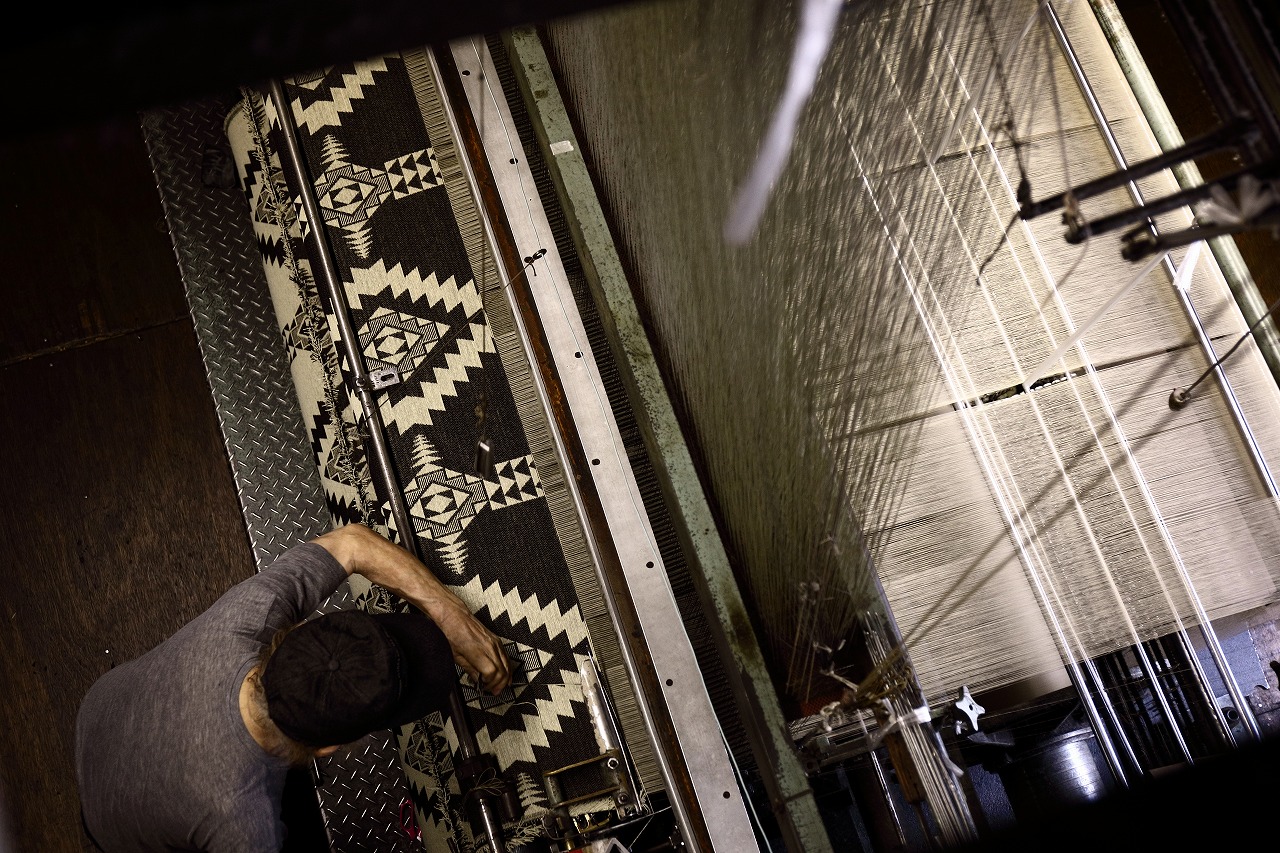
For brands which produce their products based on an American vintage style, reproduction of wool fabric is a challenge, even more so than denim and leather production.
Over a half century ago, wool recycling processes were conducted at many factories and the yarns contained various types of wool, so analyzing and understanding how to reproduce vintage wool is very difficult. Also, currently, there are only a few traditional knitting machines throughout the world, and only few skilled workers who can maintain those machines. Lastly, the material itself is costly.
This time, I’m going to dive into the wool production process and demonstrate in three separate ways, 1) how Jelado is able to reproduce their own version of American vintage wool, 2) why they are particular about authenticity, and 3) how they can release wool products with competitive prices.
Bishu -one of the world’s three major wool knitting production areas
Bishu is an old name representing the area between west of Aichi prefecture and southwest of Gifu prefecture. This area is known as one of the world’s three major wool production areas, along with Huddersfield in England and Biella in Italy. Because Bishu has the Kiso, Nagara and Ibi rivers, the water supply is good. Water supply is an important key to fabric production, which is why it started here in the first century, Yayoi era.
Wool production started in Meiji era -late 1800’s to early 1900’s. At that time, because of nationwide military uniform needs, importing wool started in earnest. The wool products made in Bishu have a high reputation nationally and globally. The reason is that Bishu does the entire process -yarn spinning, twisting, knitting and finishing, and currently there is no other place as seriously involved with traditional wool production -over a century of accumulated professional skills and a strong community of people who have built lives around wool. As a result, Bishu makes a type of wool fabric which cannot be replicated anywhere else.
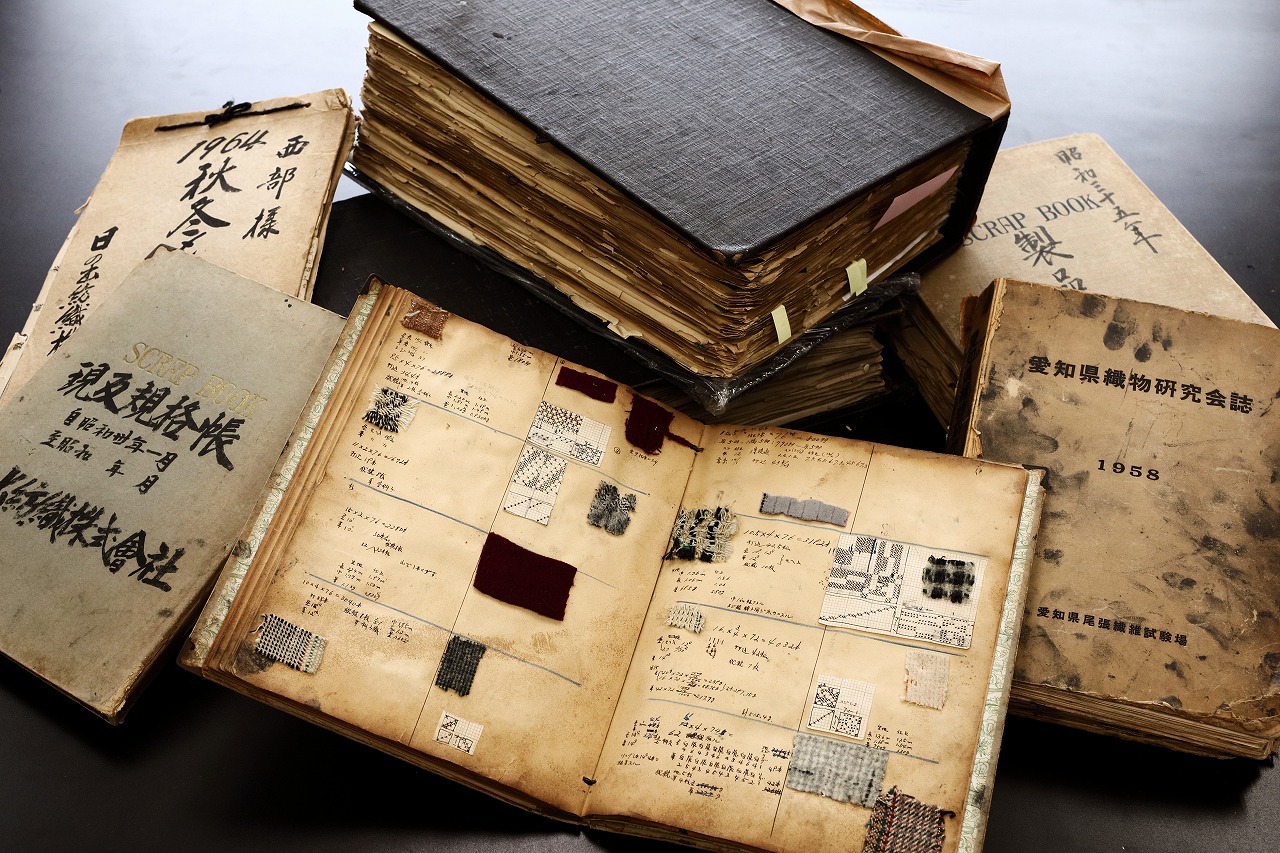
To reproduce vintage products in current times, Jelado asked a guy to support them with fabric making -this is Mr. Kozaki, the CEO of Hinode Boseki, and he has earned an excellent reputation in Bishu by producing beautiful fabrics using the skilled craftsmen of the area.
The fabric manufacture starts by examining a number of vintage samples which JELADO owns, and a huge number of sample 19th and 20th century fabrics from all over the world, which Hinode Boseki owns. Then, once a vintage fabric foundation has been selected, it’s cut in pieces and analyzed by professionals at each stage of development. It usually takes at least five to six months produce a test sample because it requires making a sample twice. If you look all over the world you will notice that there are not many apparel makers who put traditionally produced fabric into their products, and that’s because the work involved would destroy their profit margins. Jelado orders a large amount of the fabric and uses it in a wide range of products to make sure nothing goes to waste. Mr. Kozaki says, “We’ve seen many fabrics. For us, compared to other categories, reproducing vintage wool fabric is extremely difficult work because there are so many lost techniques in wool manufacturing. Here in Bishu, the number of factories which can take orders like the ones made by Jelado is decreasing year by year. I think Jelado’s existence is very important for us from the view of transferring Bishu’s techniques to the next generation.”
So let’s take a look at the process of how the wool fabric by Jelado & Hinode Boseki will be made by exploring these uncommon inherited techniques.
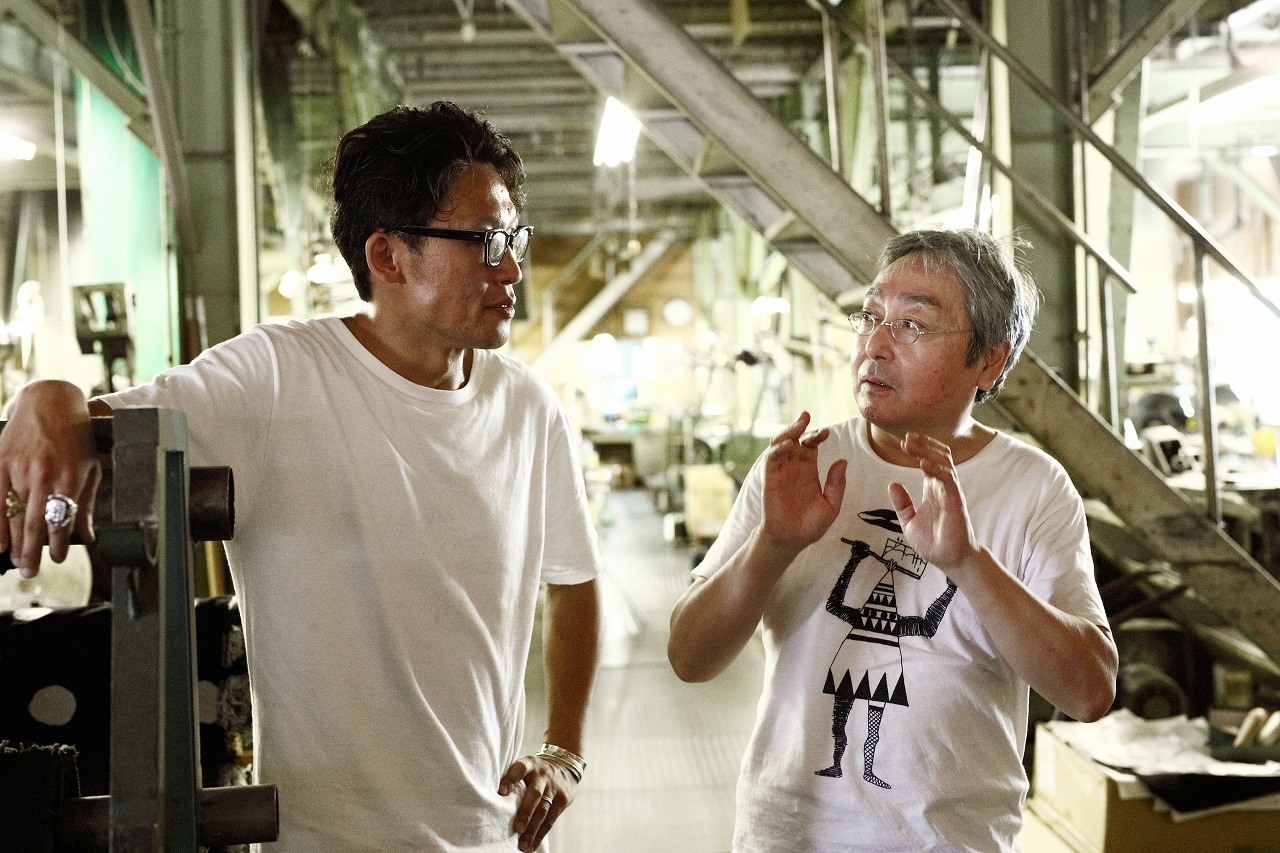
Step 1, Yarn Spinning
Our first visit was to the Mikawa Bomo factory. Mikawa Bomo conducts Boseki (yarn spinning), the first step of making fabric. This is where wool products begin their life.
There are basically two types of wool yarns; Somoshi is made of long thin hair and mainly used for making suits, and Bomoshi is made of short hair and mainly used to make thick wool - the type of fabric which is easily brushed and has good heat retaining property like vintage wool fabrics. Jelado requested Bomoshi. It should be noted this factory conducts various types of yarn spinning in addition to wool. They are known in the industry for “turning any hairs into yarns”. Most importantly in terms of wool, it is one of around only 20 factories left in Japan which can produce Bomoshi.
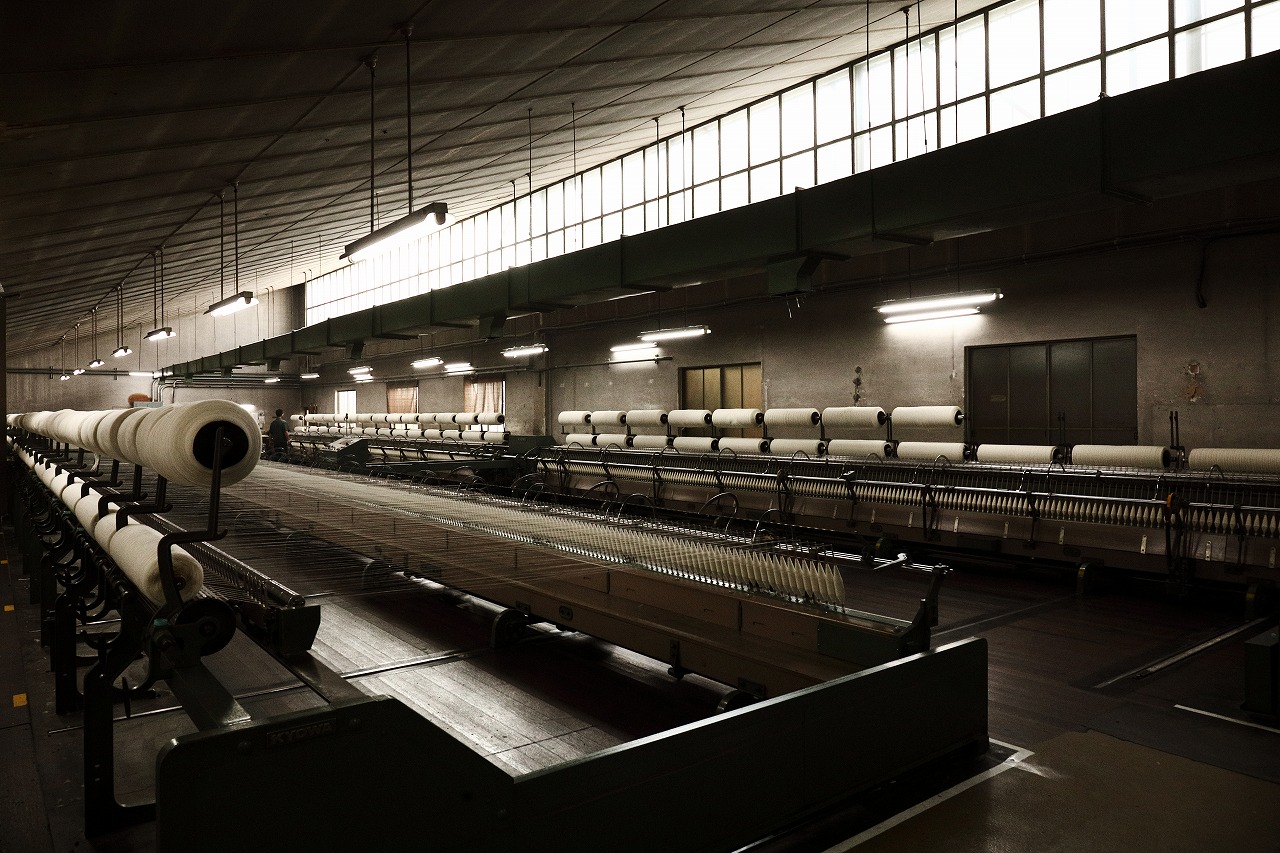
Difficulty of reproducing vintage wool
Mr. Hamatani, the CEO of Mikawa Bomo, says that the most difficult part of reproducing vintage wool is fabric analysis.
“Because wool fabric was expensive over a half century ago, there are many cases in which the vintage yarns contain recycled wool. Therefore, when we reproduce vintage wool fabric, we have to analyze the color, where it is made, how many and what types of wools are used, and the ratios of hair amount under 0.1% fineness. We start from investigating where and when fabrics were manufactured. That’s an extraordinary process. The order from JELADO is especially tough, but we can really distinguish ourselves from the others with our precise techniques. We are eager to face this challenge.” As you can see in these photos, although the yarn looks brown, it is made of various types of finely-mixed wool. -demonstrating the complexity of reproducing vintage fabric.
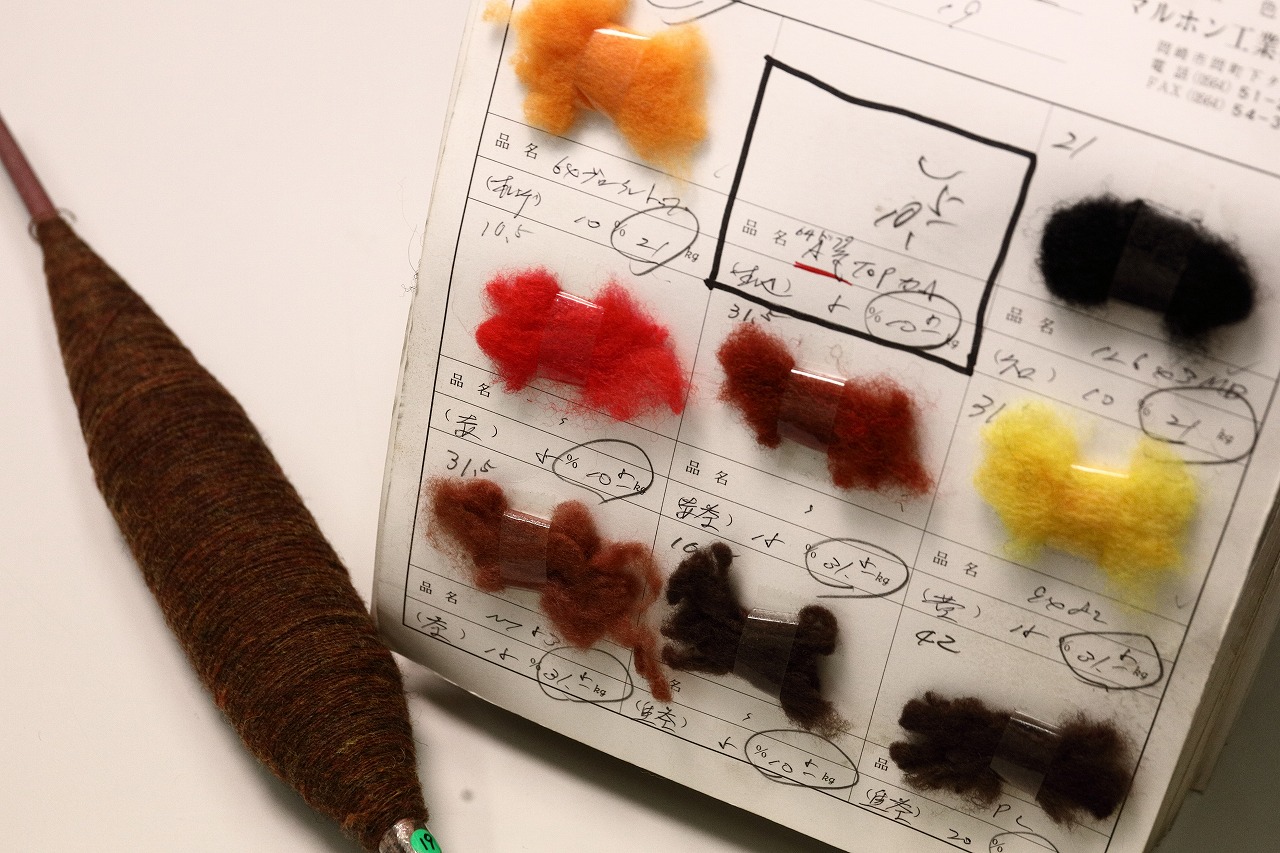
Before wool yarn is made
There are five main stages before wool yarn is made. “Kaimo” is sorting the wool hair and blending them evenly. “Chougou” is adding a formulated oil to the wool. “Card” is rolling a wool yarn with a roller to make milllefeuille shaped wool layers into fiber bundles, called “Shino”. “Seibou“ is making yarns from “Shino” by twisting with a mule spinning machine. And finally “Winder”, making a top which looks like a 1kg-ball shaped by winding the wool yarn to be easier for knitting and weaving.
In the industry, ring yarn spinning is currently recognized as the main spinning method because it conducts twisting and winding at same time. So why do they use an inefficient mule spinning machine? The reason is that a mule spinning machine can blend various types of hair, achieving the soft and fluffy finish found in vintage wool. It was a miraculous space where disappearing techniques are fully used.
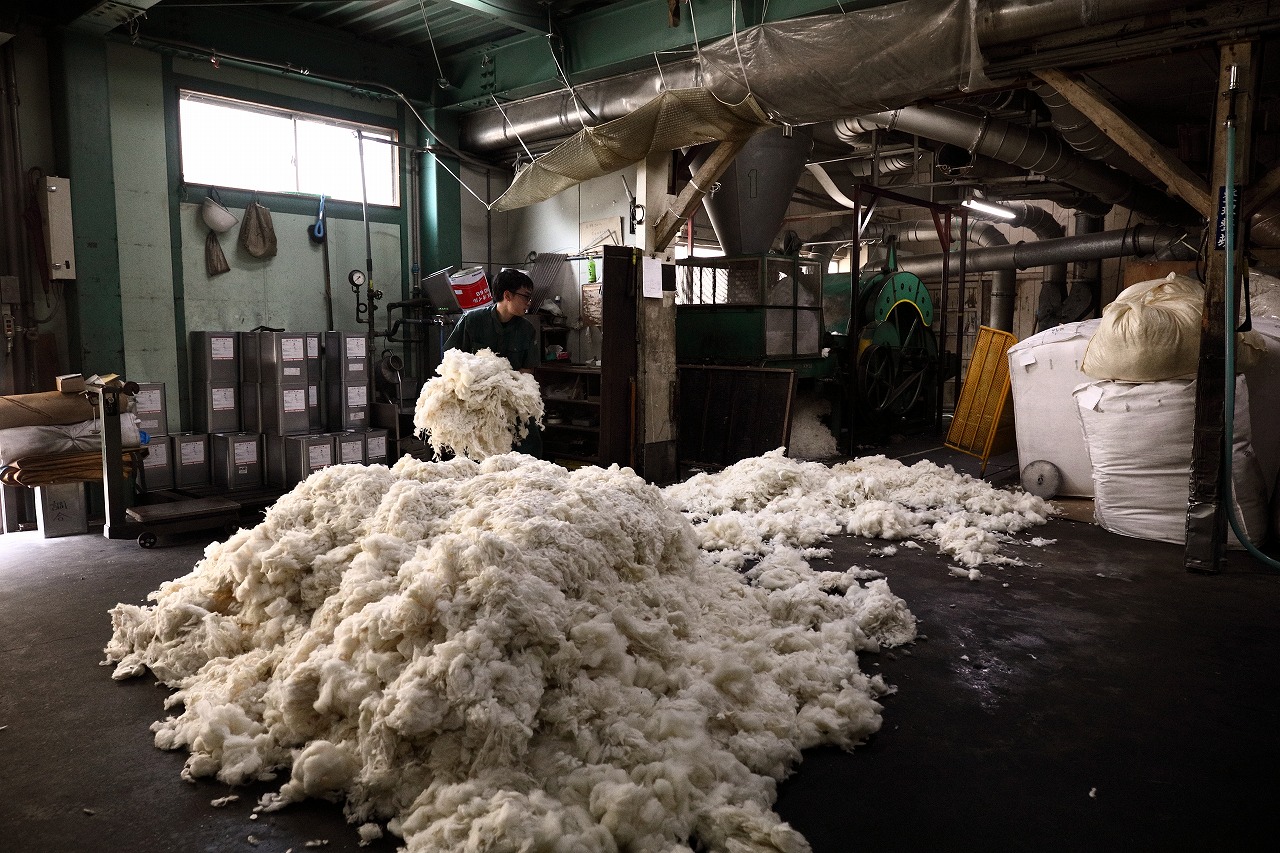
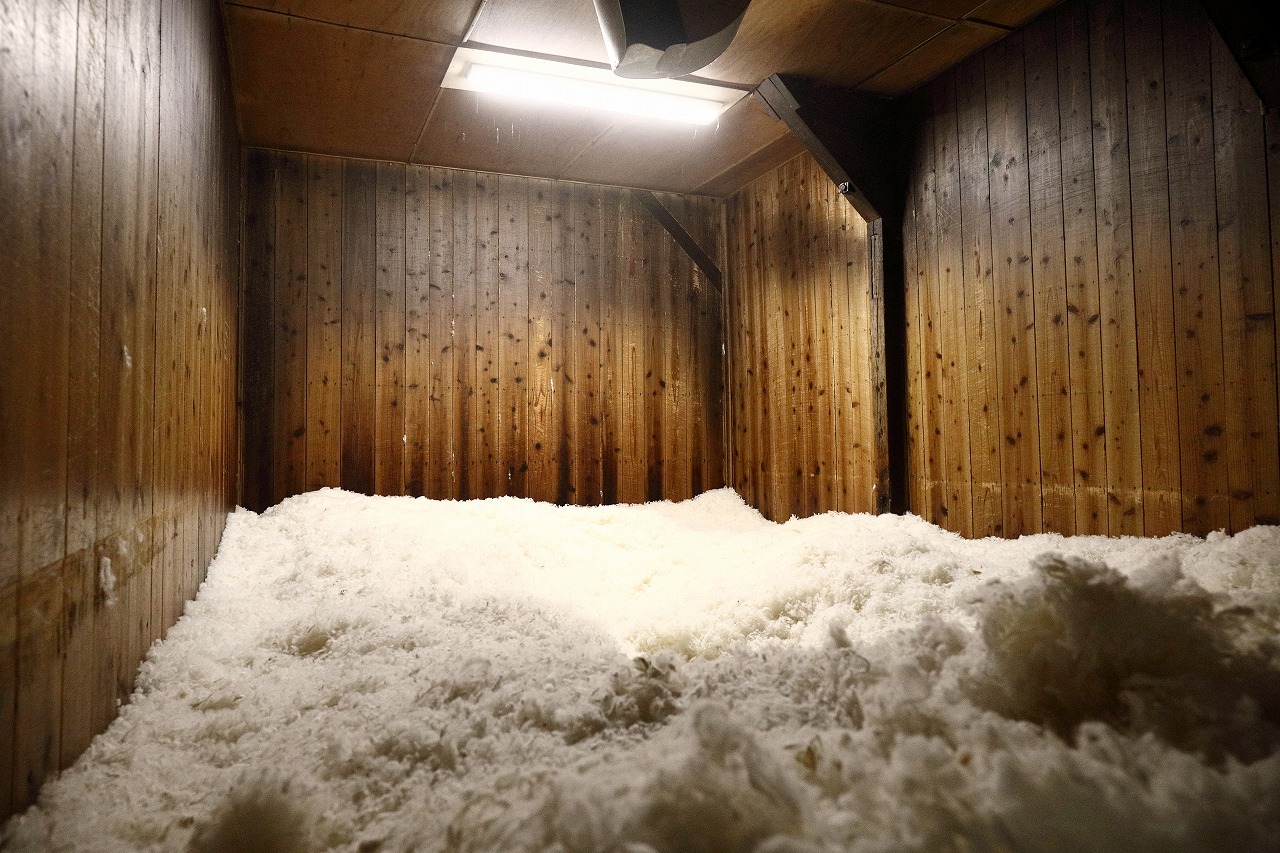
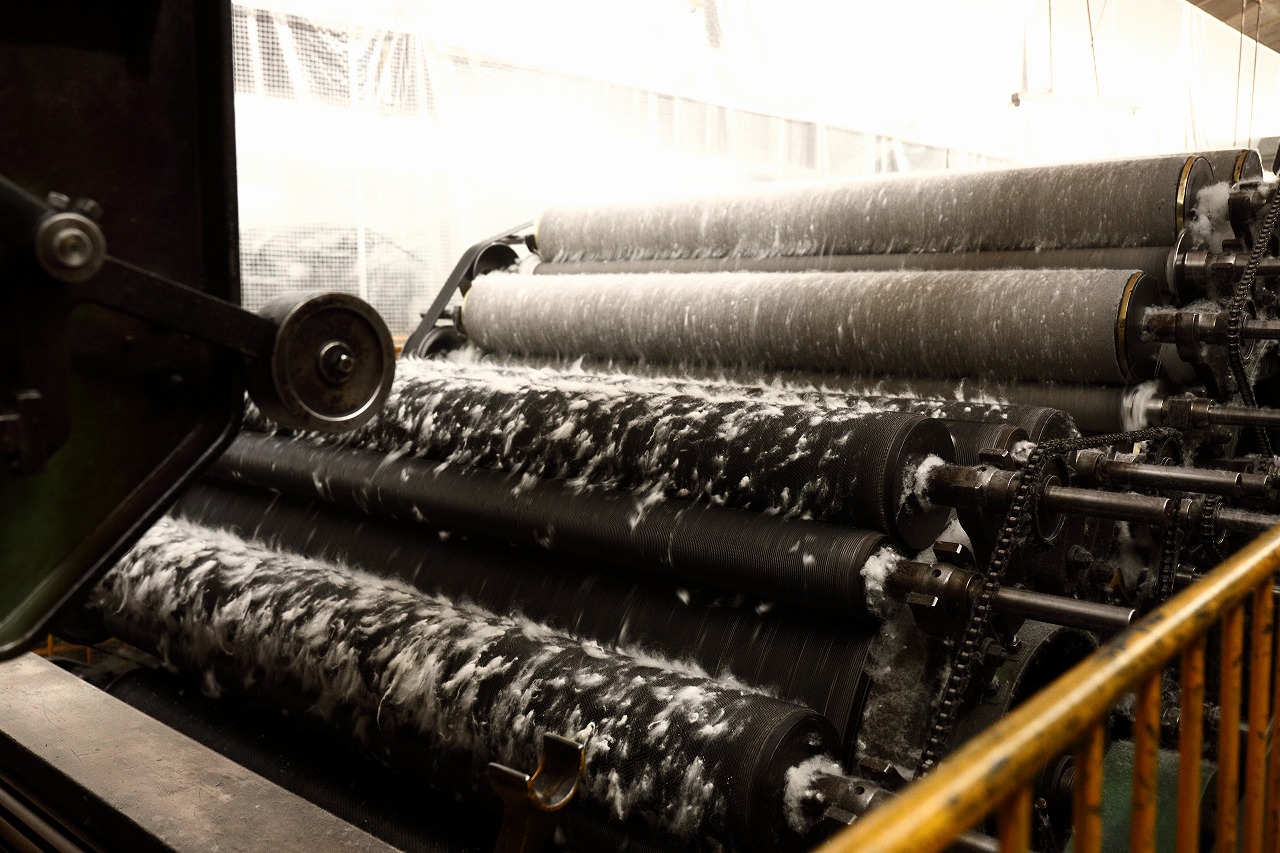
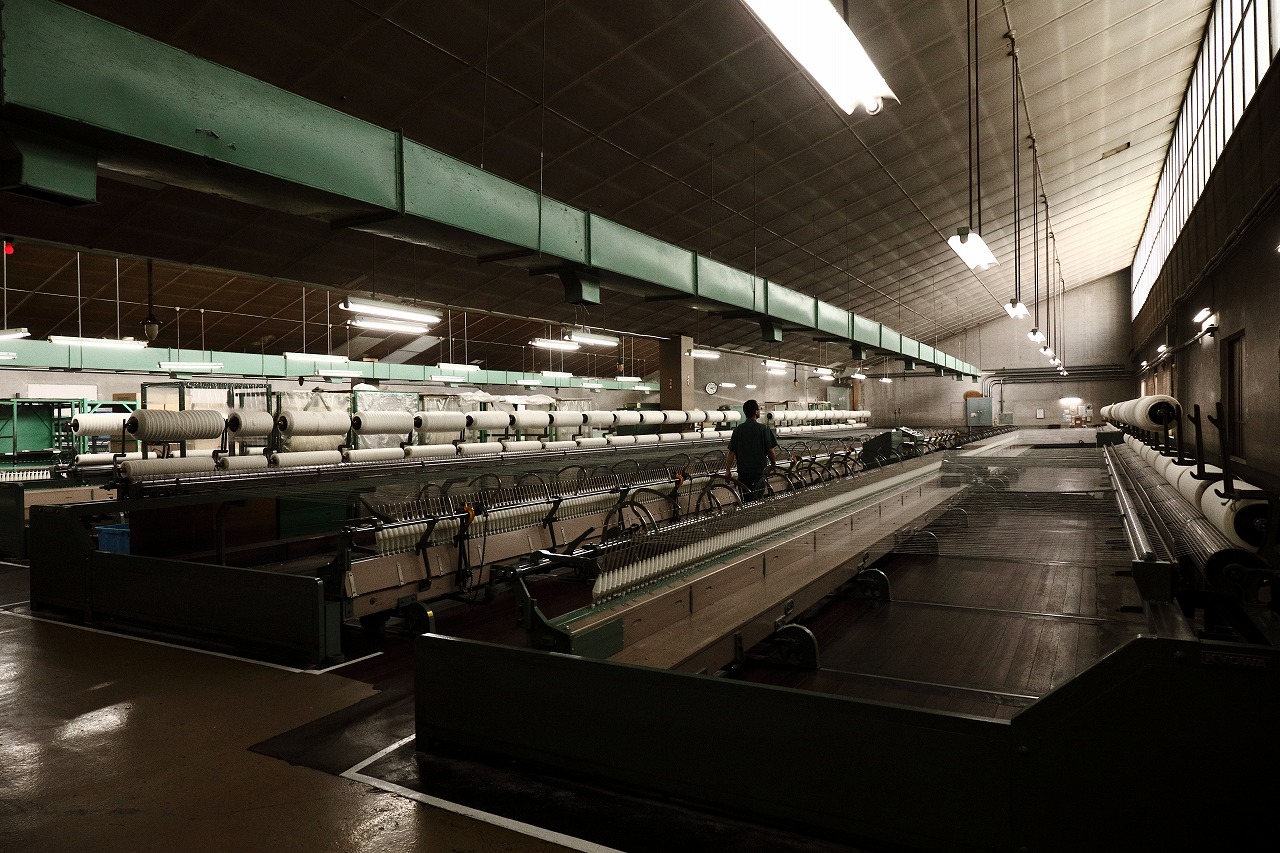
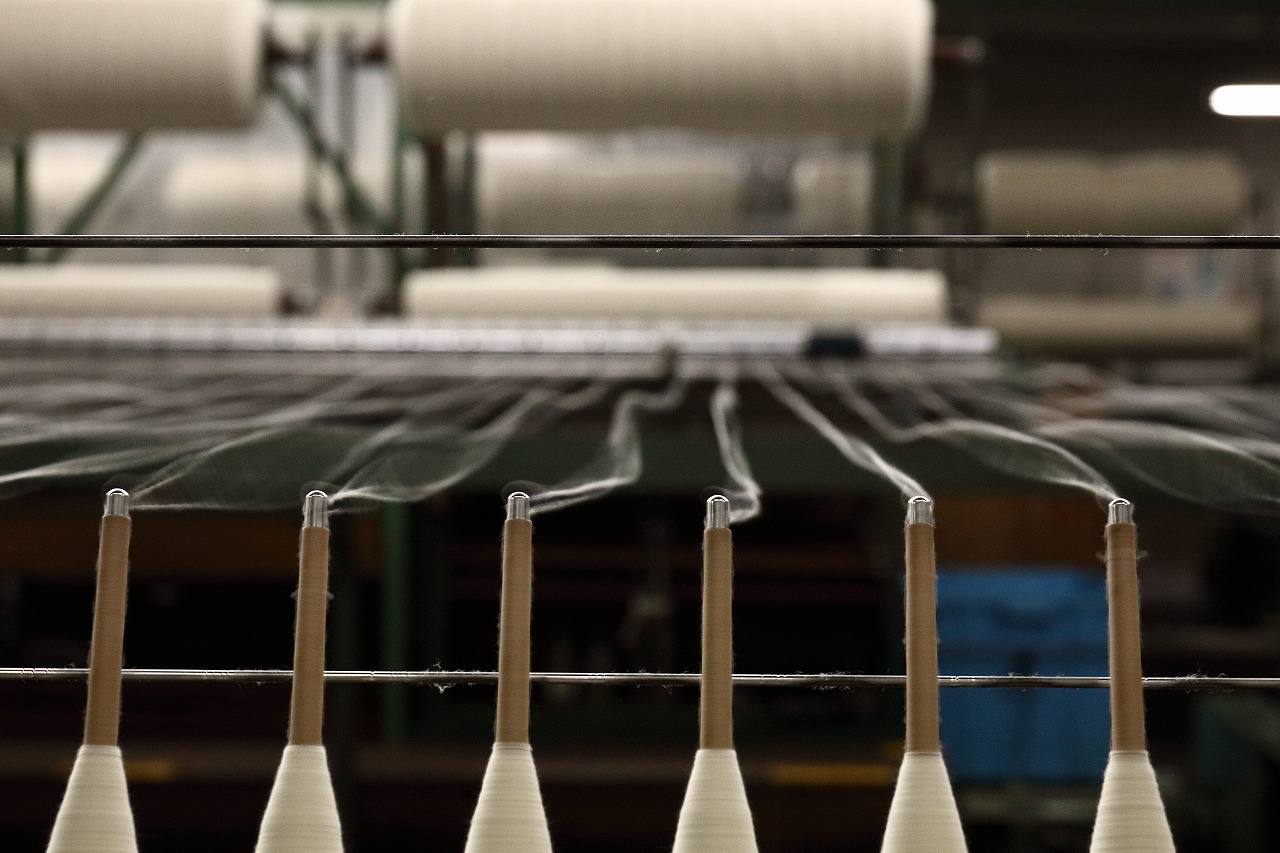
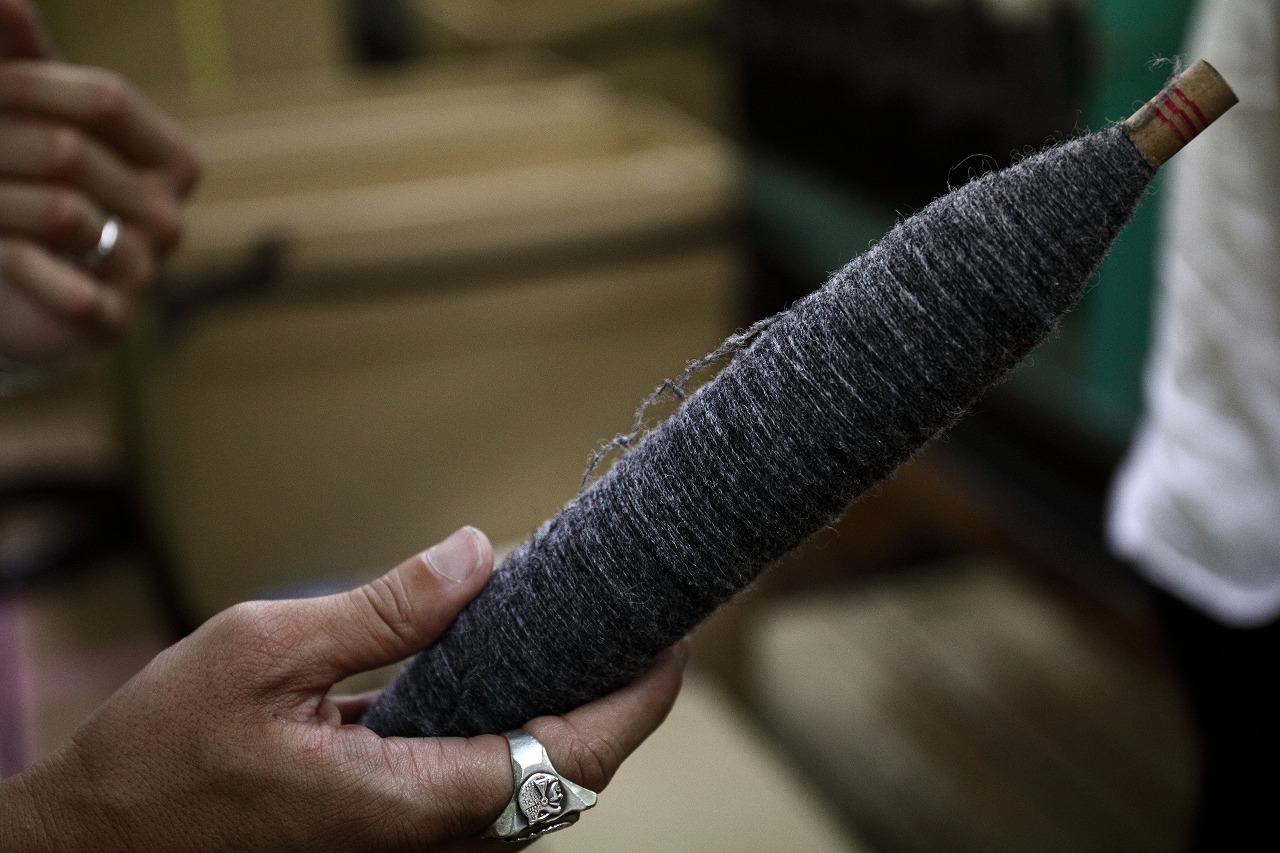
“If we quit our job, there will be no vintage quality wool products in the market. We feel responsible for this.”
Mr. Hamanishi, the CEO of Mikawa Boumou, says:
“We have tried to preserve the quality of the past to make better products. That’s all. We recognize that quality of communication is very important at our factory, so we only have Japanese workers for now. We struggle to convey to young people how cool manufacturing work is. It’s a pain in the ass. If we quit, there will surely be many products that can’t be reproduced. So we really appreciate supplying for an apparel maker that keeps vintage quality alive”
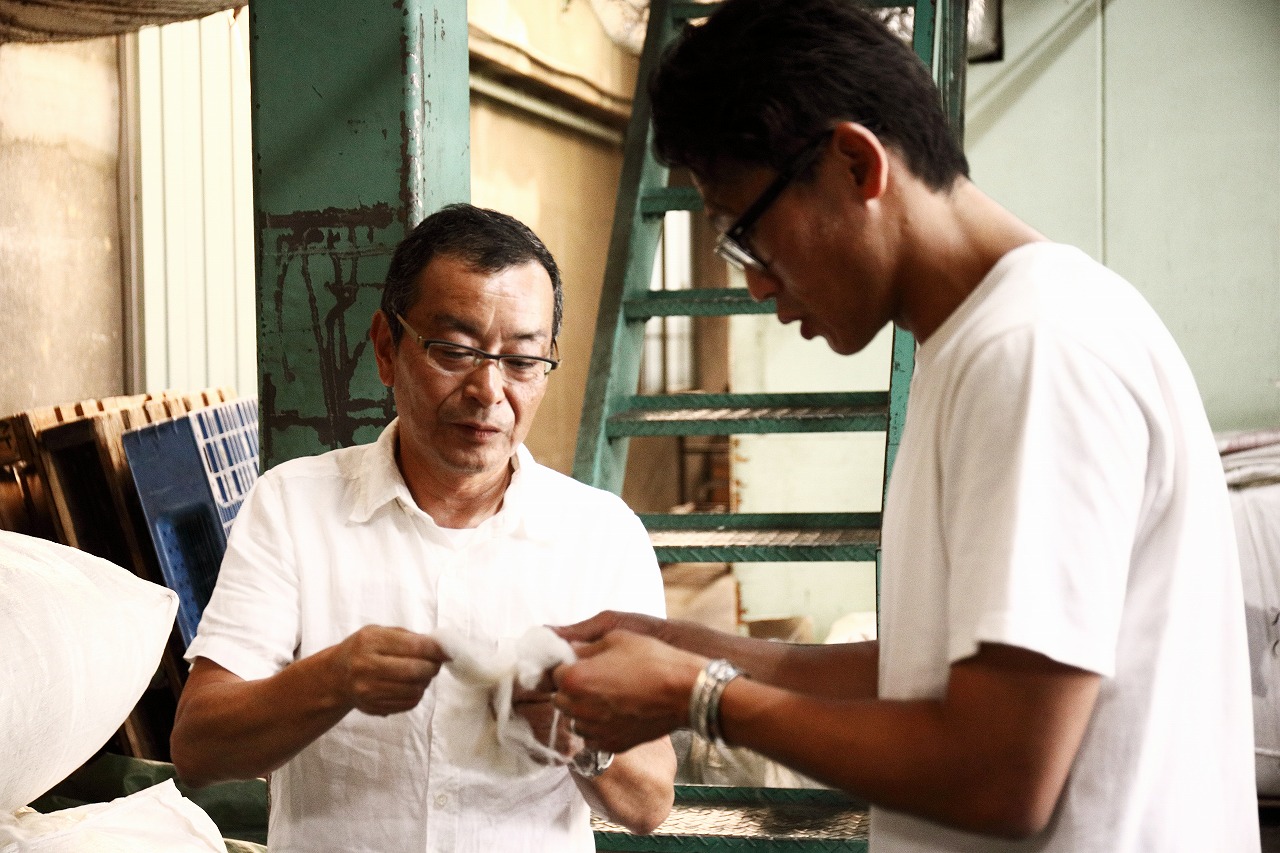
Step 2, Dye
After visiting Mikawa Boumou, we head to Chasen Senkou factory. As the words describe -"Senkou" means dyeing process- this is a place where yarns are dyed in arbitrary colors. Their factory has a high reputation from brands which make products based on vintage clothes because the factory can make superb colors without losing yarn quality.
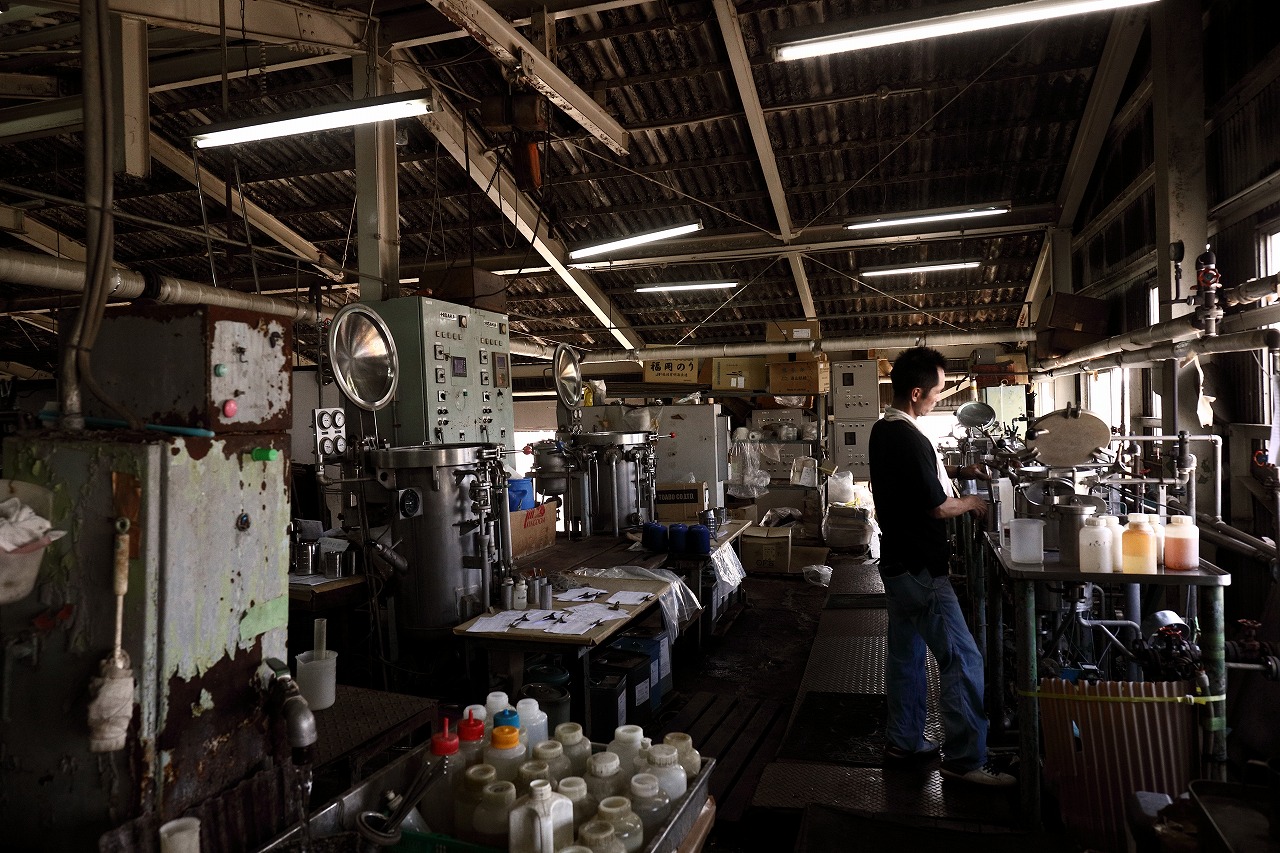
Flow of Dyeing
The first thing to do is color formulation. With small beakers, they formulate several colors and dye the yarns over and over. The important thing in this phase is that their skilled workers (Shokunin) adjust and judge the color by their own eye, though the ultimate decision is left up to apparel makers. Because it’s really hard to explain vintage color and texture in words, only a skilled worker who has a decent knowledge of vintage products can conduct the process, and in addition to skill it requires enormous time.
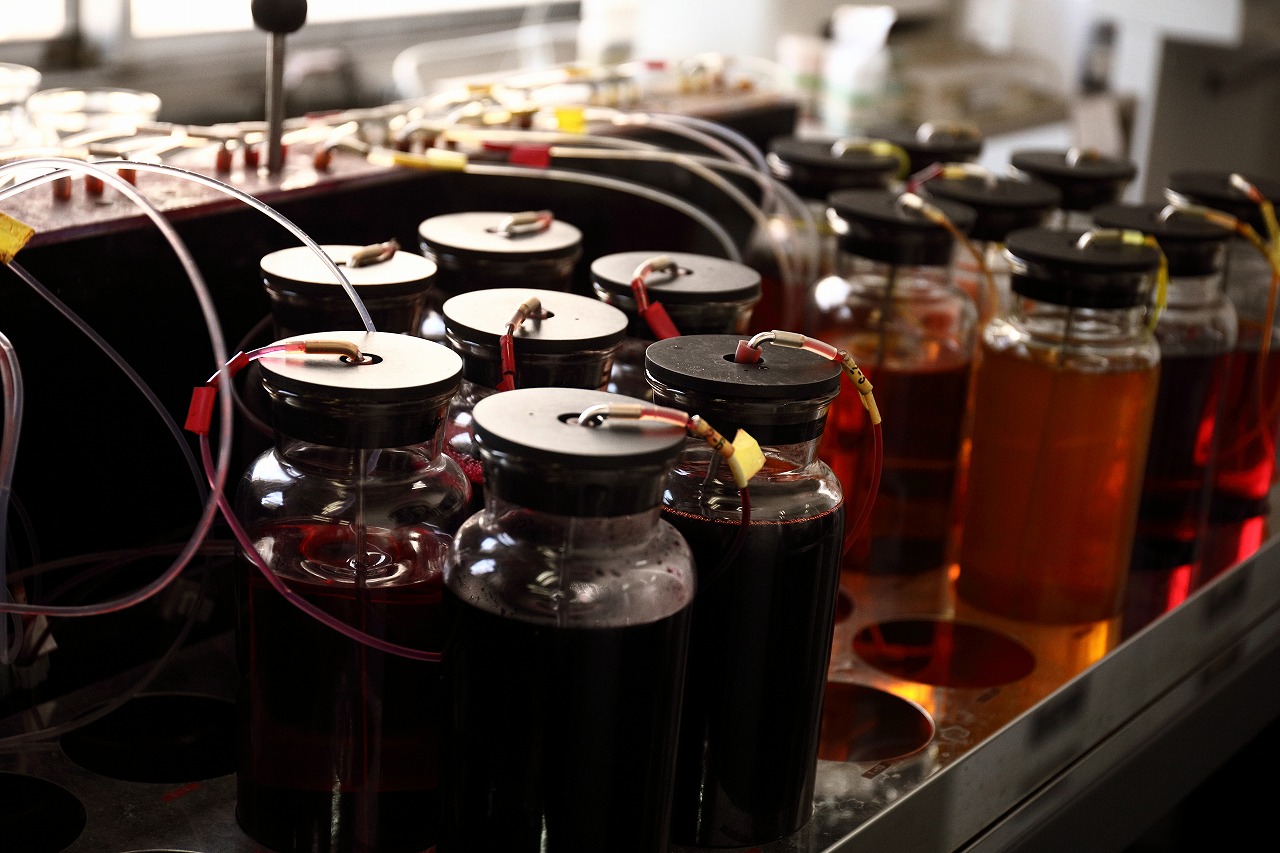
After the color formulation and adjustments are finished, the process will be shifted to the next phase, dyeing yarns in bulk amounts. Now they need to make tens or hundreds times more dye than they made during the previous phase. It’s difficult because colors are easily affected by temperature and humidity; again the expertise of the craftsmen is essential.
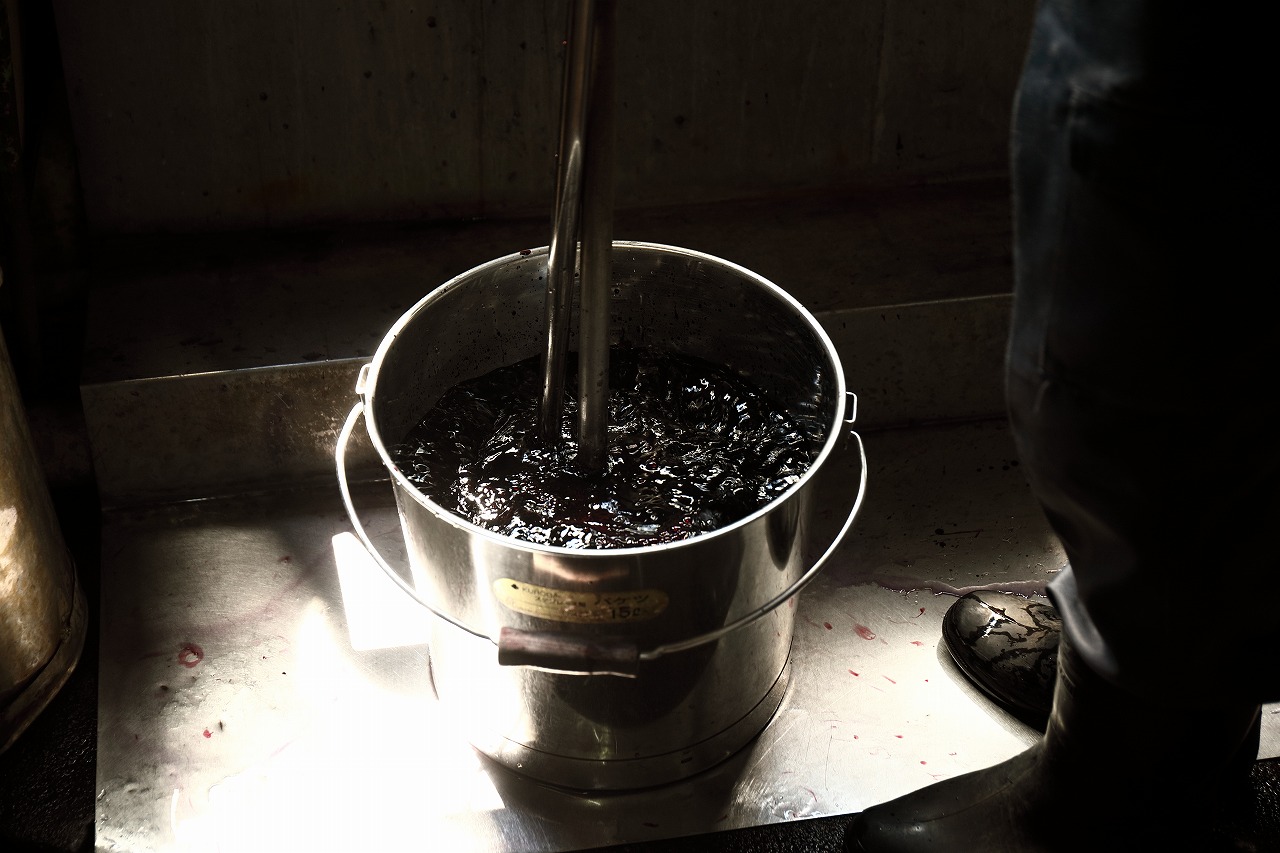
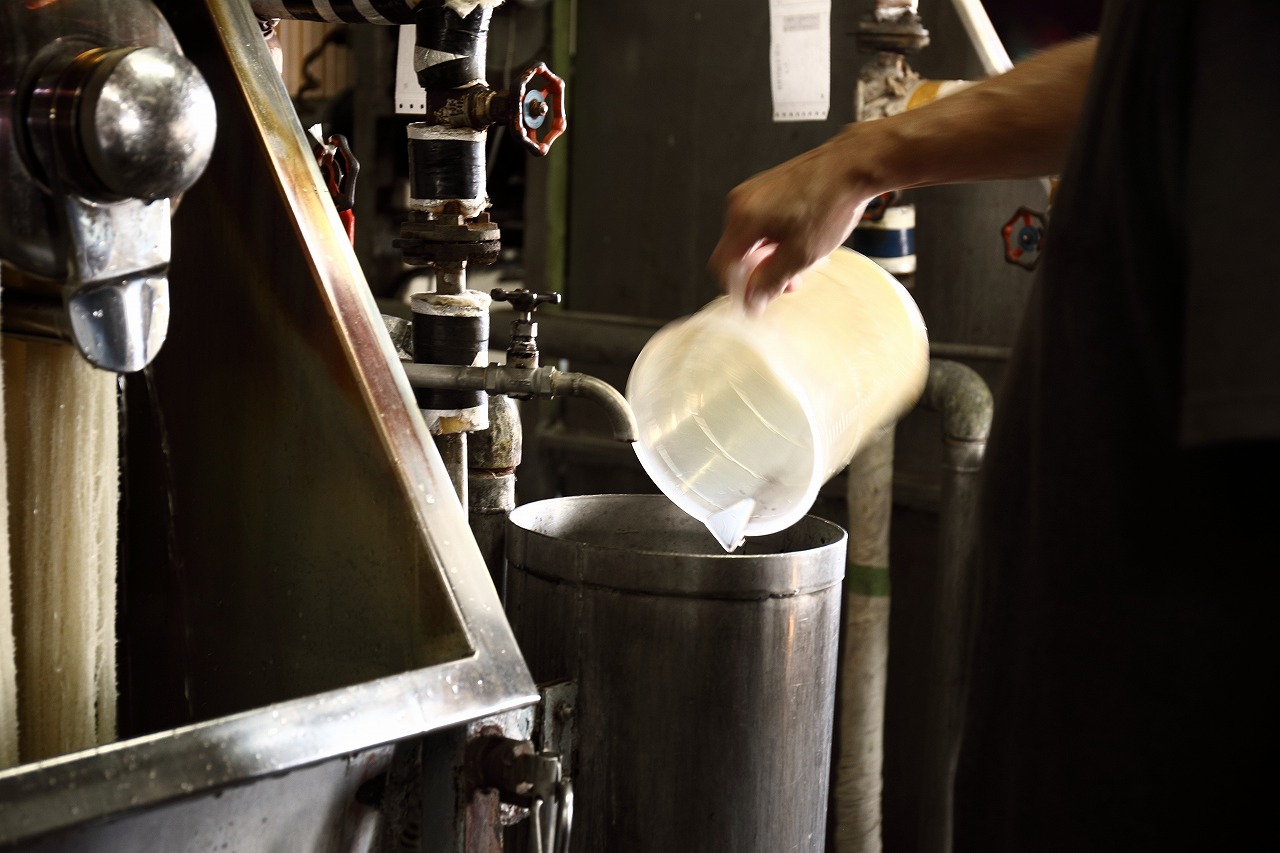
The yarns are put in a pot to process dyeing. In case of the thick wool yarn that JELADO uses, Kase dyeing is used. Since the temperature of the pot only reaches about 100℃ at the most with this method, the maximum amount of wool that can be dyed at one time is 200kg. In manufacturing industry, maximum profitability is essential, so Kase dyeing, which is inefficient compared to modern methods, is rare. However, the Kase dyeing method has advantages over the cheese dye method commonly used now -which finishes with a high temperature, 130℃ -it prevents color unevenness and makes wool fluffy. To recreate the quality of vintage wool, Kase dyeing method is crucial. After the dyeing process, the yarns are dried for 1.5 hours and sent to a weaving factory.
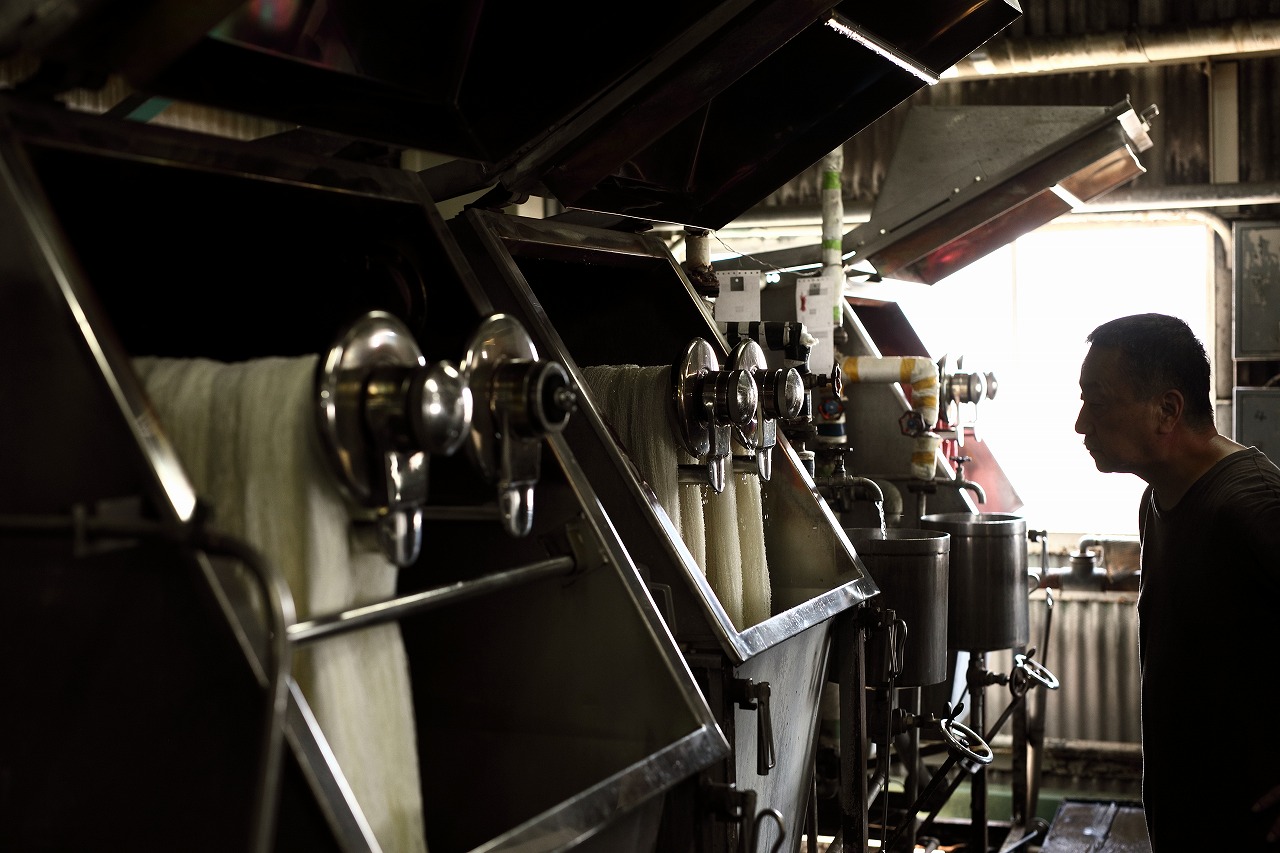
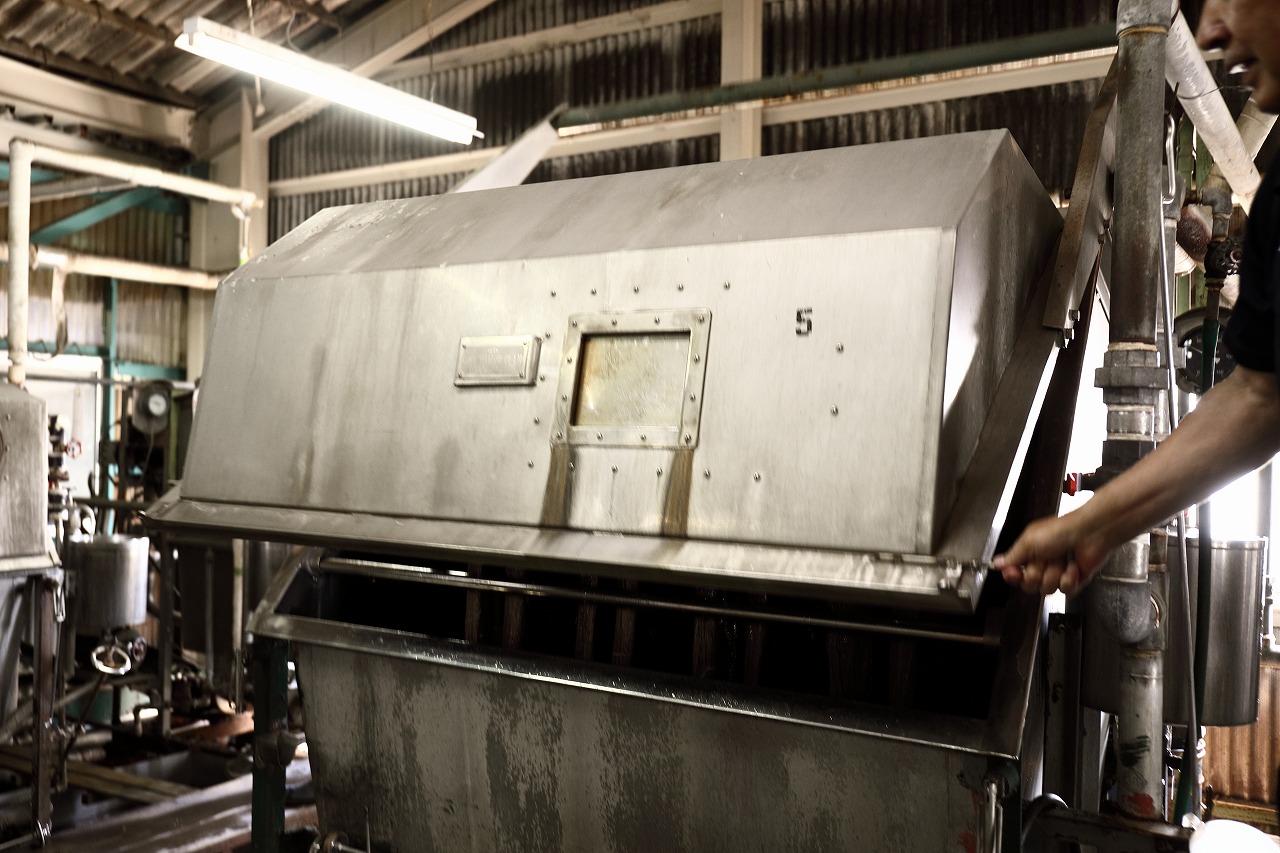
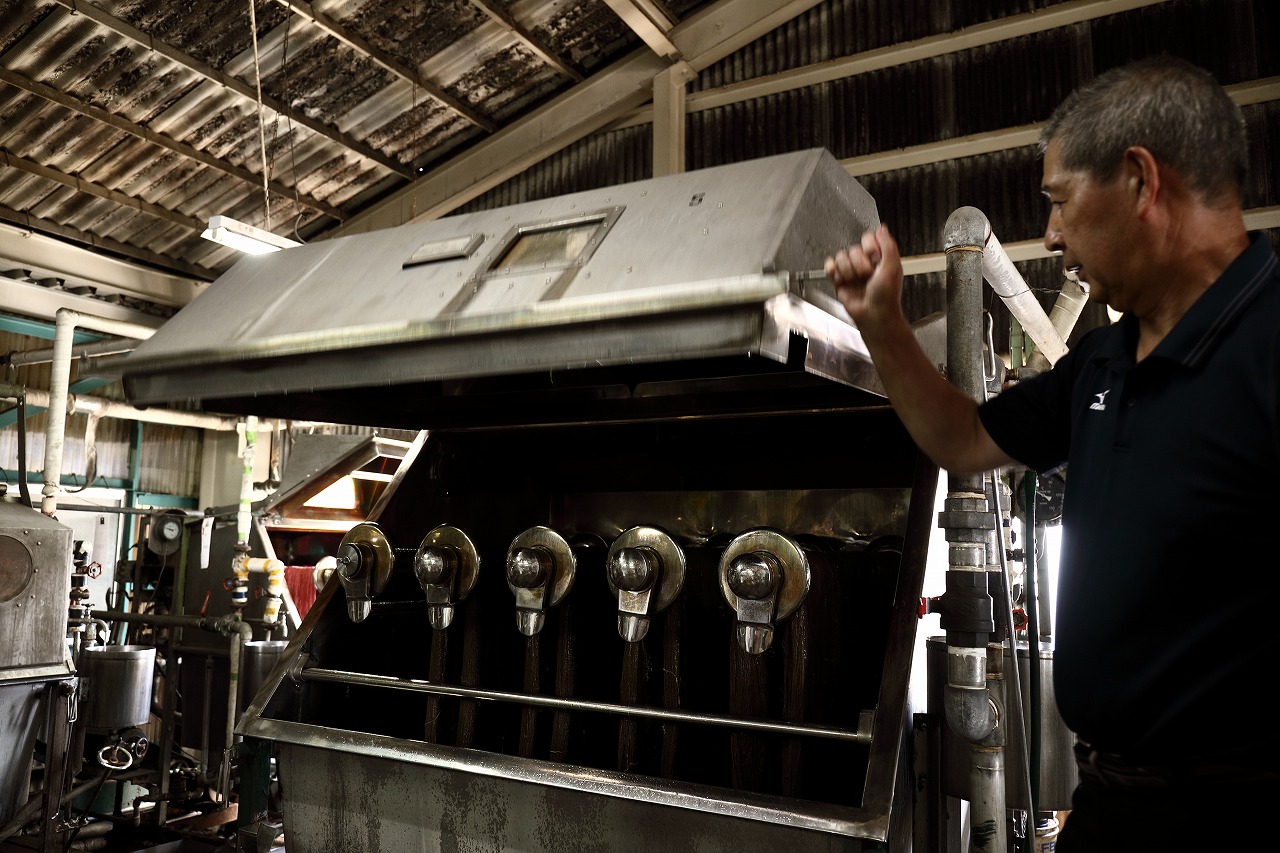
Step.3 “Weaving”
The process to make yarns into fabric is called “Seishoku” (a weaving process). As with the spinning process and dyeing process, this weaving process is also conducted with traditional passed-on techniques.This place is one of the few factories in Japan where a Jacquard weaving machine is in operation, one that is able to weave the large pattern blanket fabric requested by JELADO.
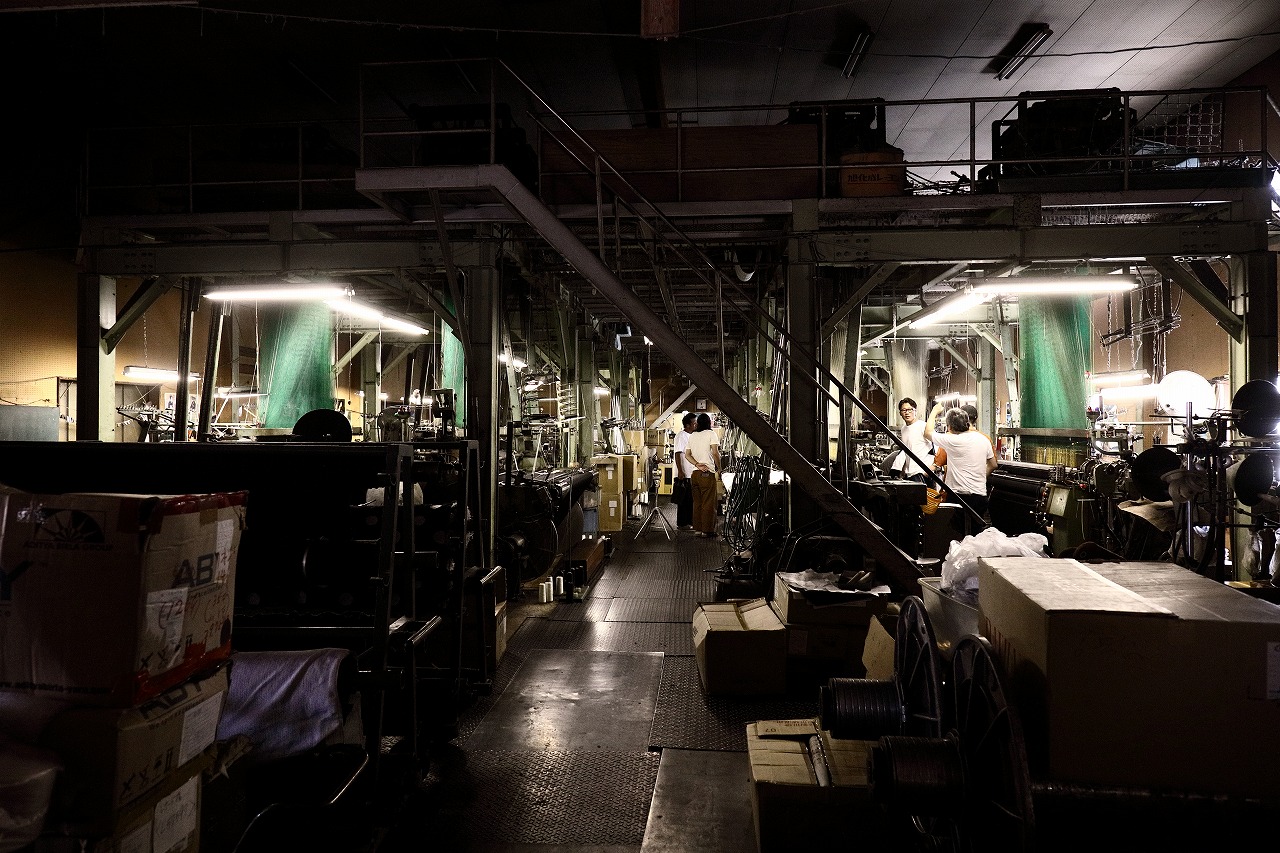
Flow of Weaving Processes
The first part of the weaving process is to wind a warp yarn around a bobbin. It takes a whole day. Another whole day is required to set up 3200 warp yarns in the weaving machine. Adding to the challenge of this process, there are only few workers in Japan who can set up the Jacquard weaving machine.
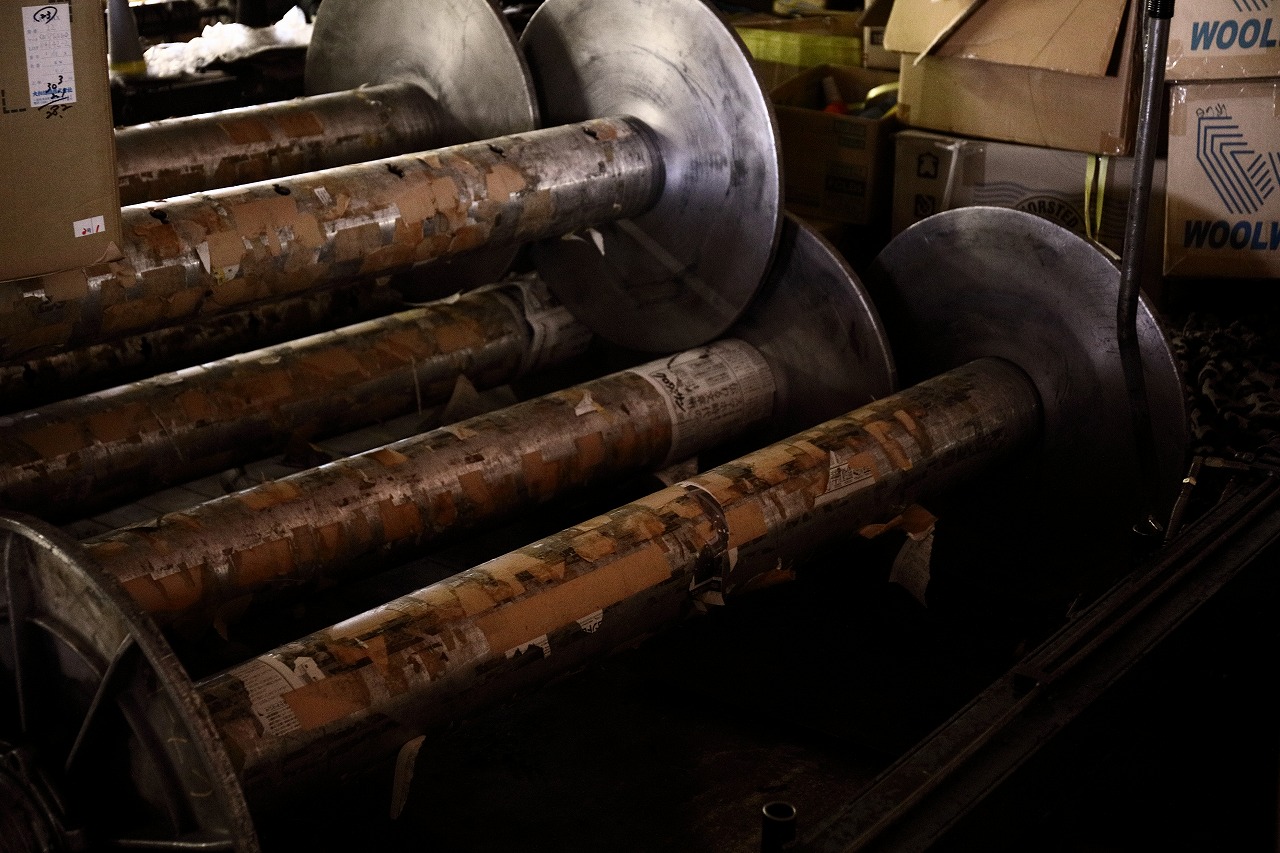
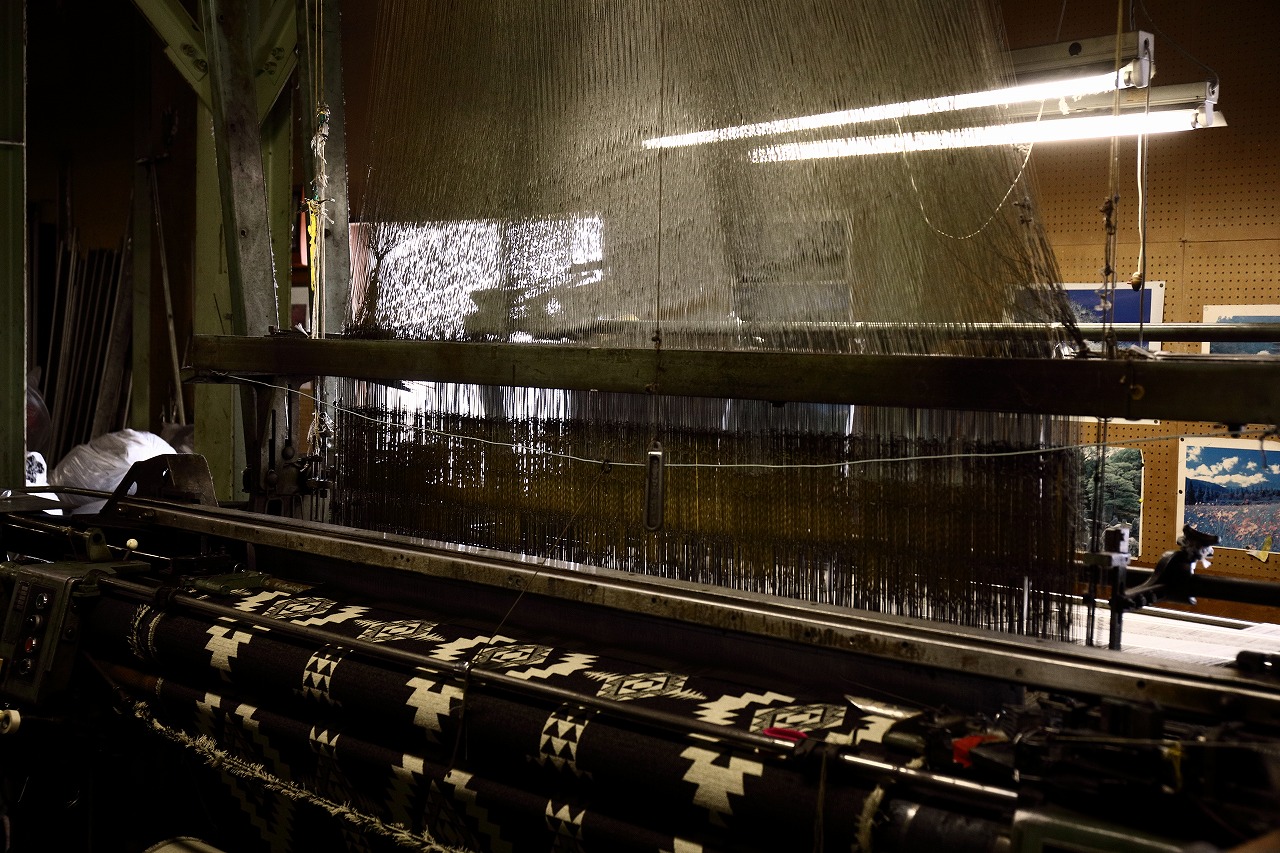
After yarn assembly, Monshi, the biggest feature of jacquard weaving machine, is set. Monshi is a 80cm square plate which has 1152x1400 holes to create patterns in fabric.
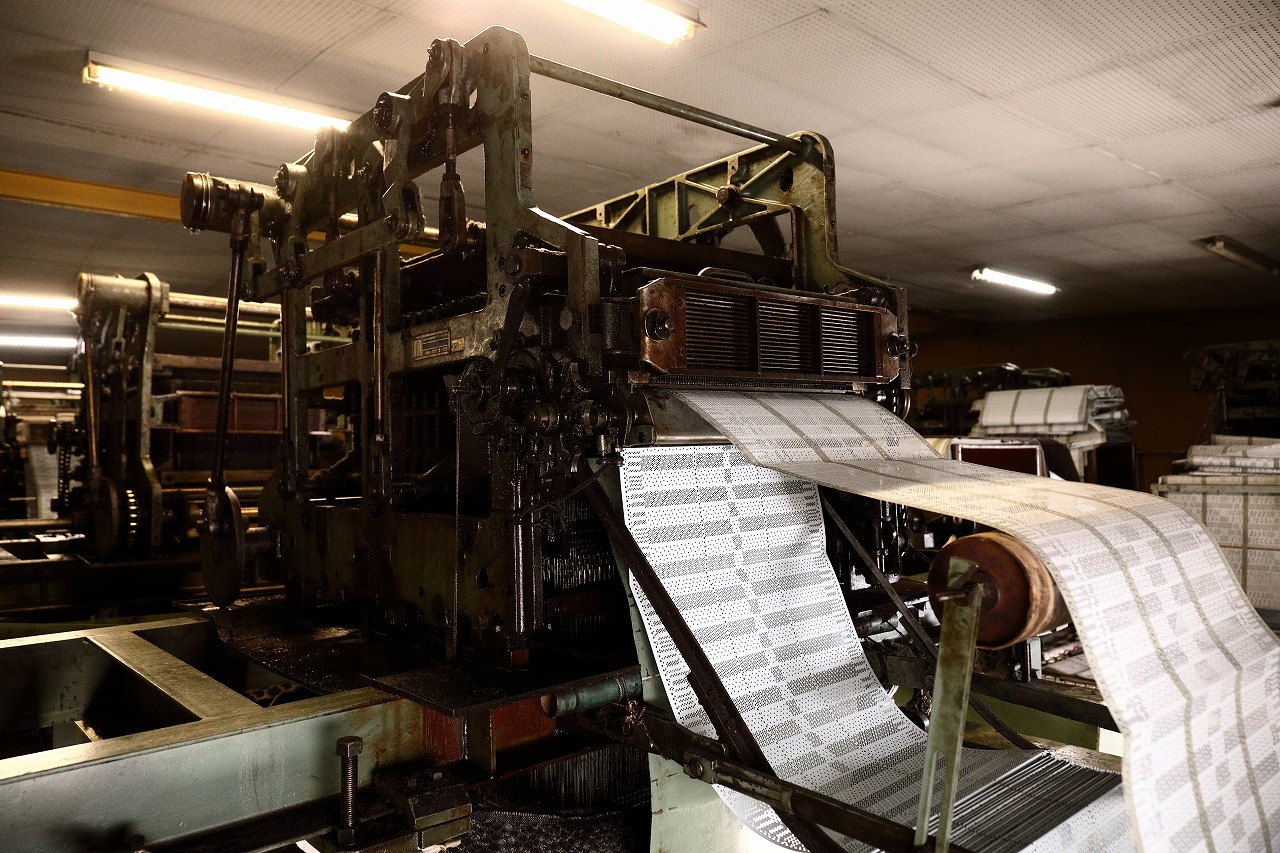
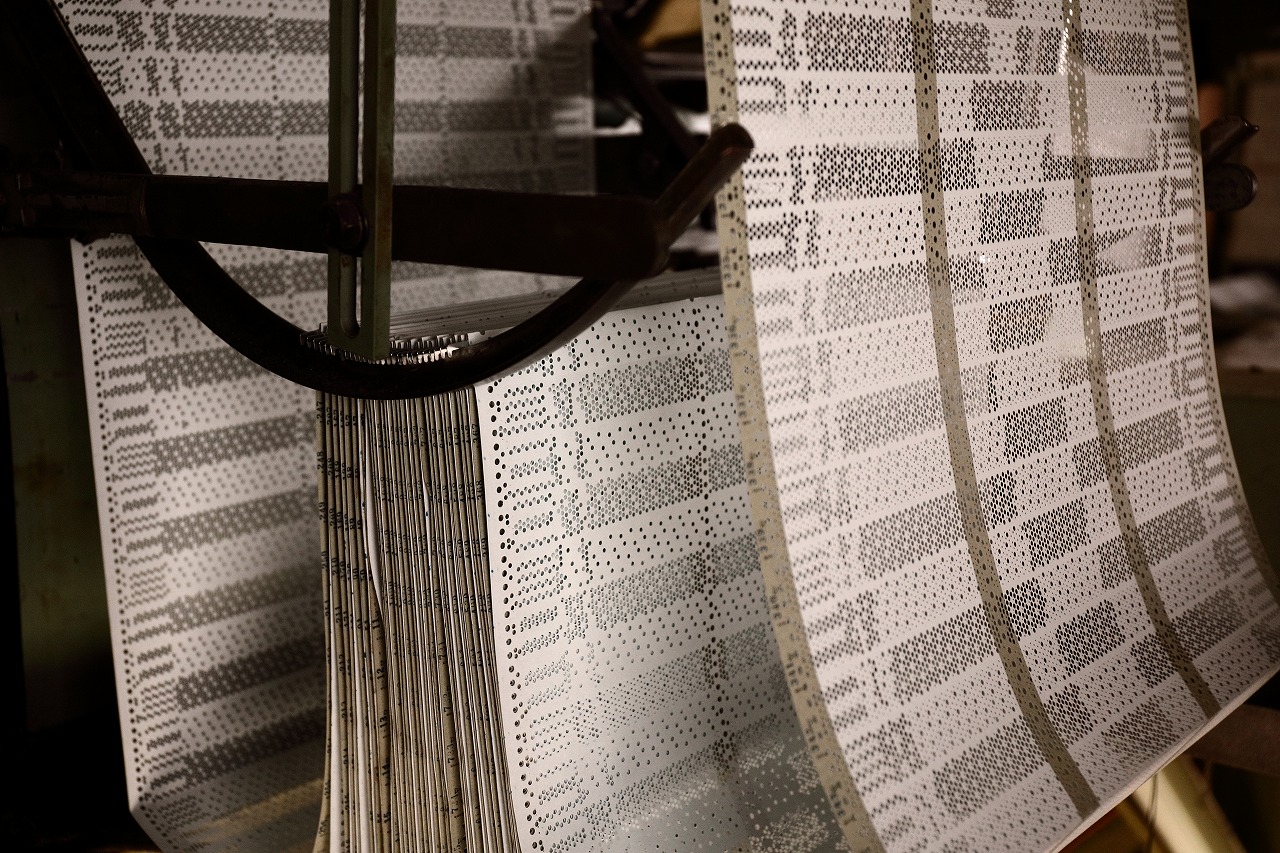
Only about 20m can be woven in one day. Warp yarns getting cut by accident and running out weft yarns can cause delay, but the biggest hold up is the weaving speed. It is essential to run the machine in slow speed because that also helps preserve the fluffiness which is found in vintage blankets. And since the yarn wound around the bobbin is thick, the frequent exchange cycle slows things down as well.
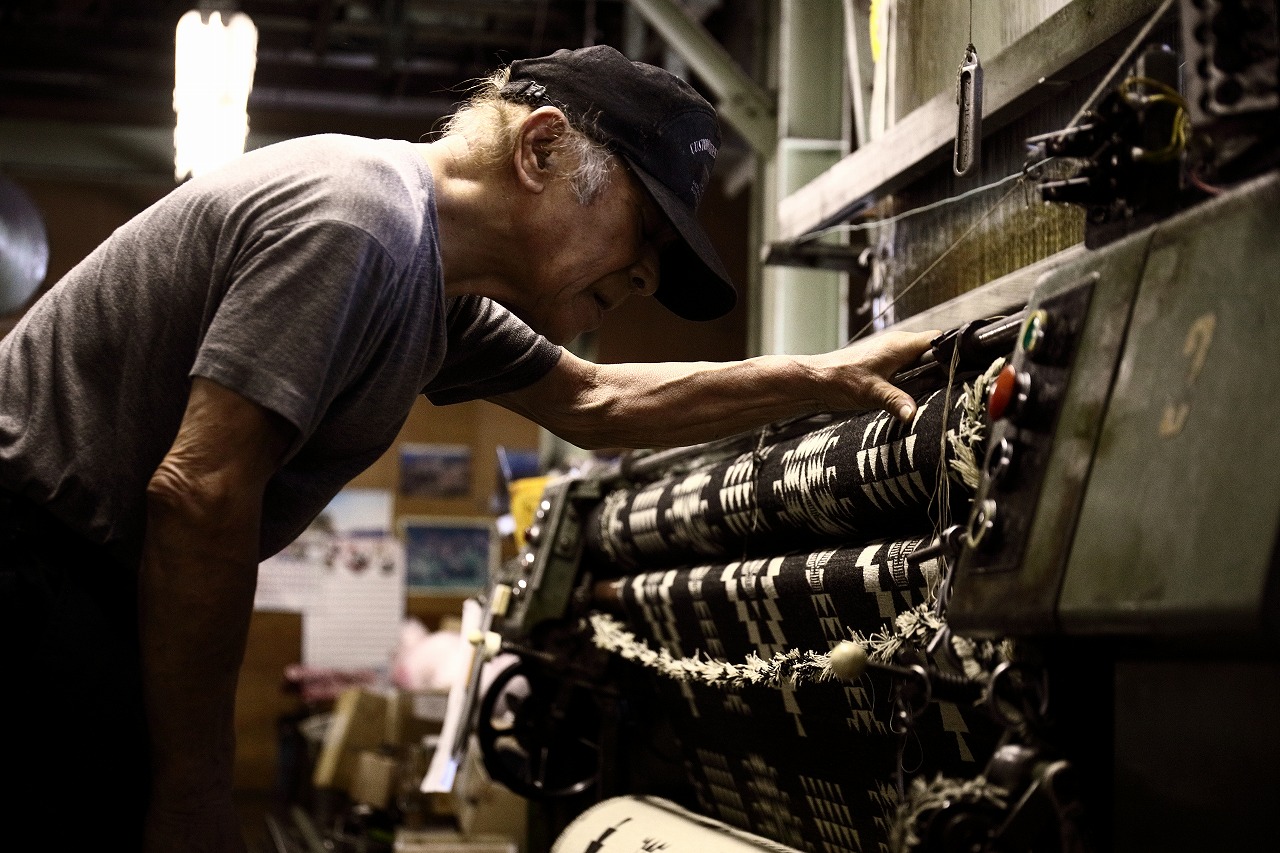
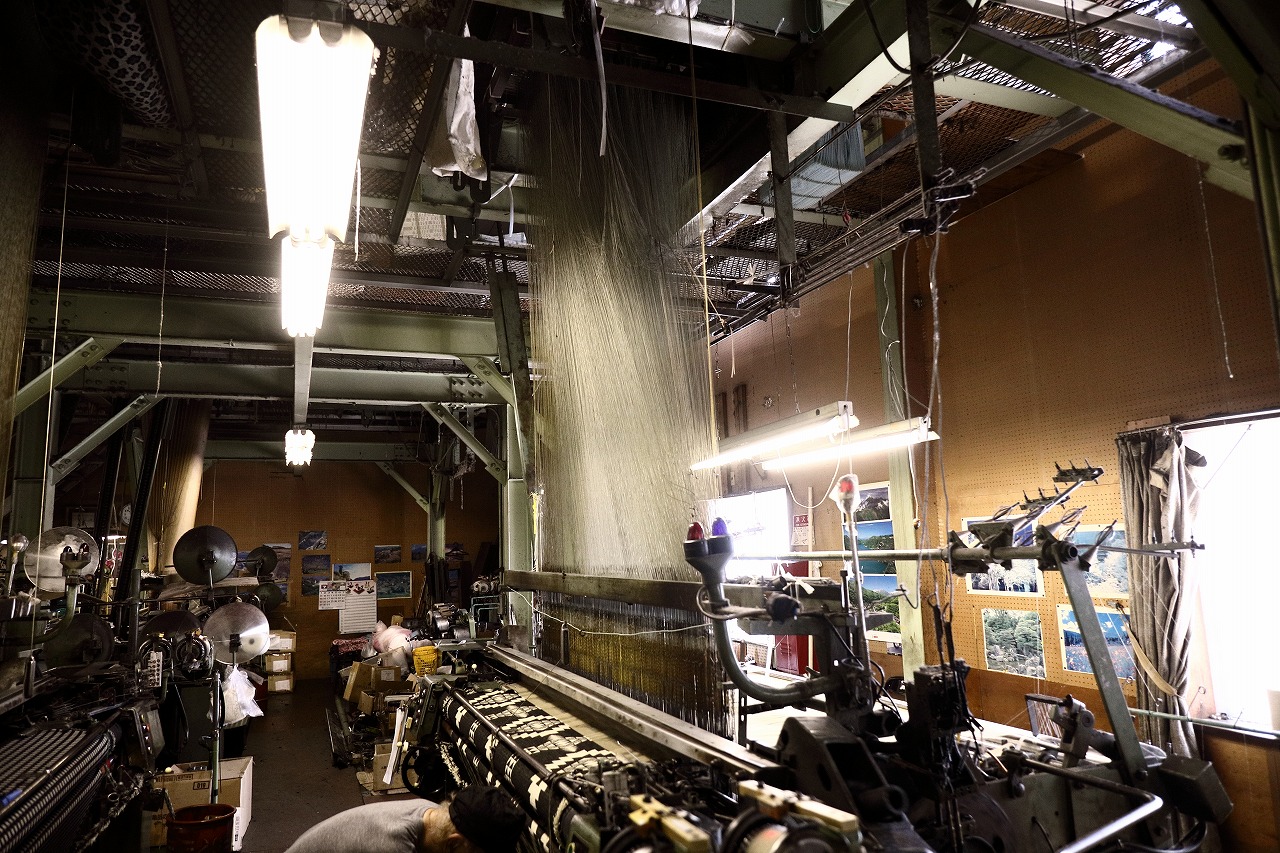
The average age in this factory is 70. Their youngest worker is in their 60s. If they retire, what will the future of Japanese wool fabric be? Nobody knows how many years more they can keep making their products, but JELADO will keep ordering them. That’s the JELADO way.
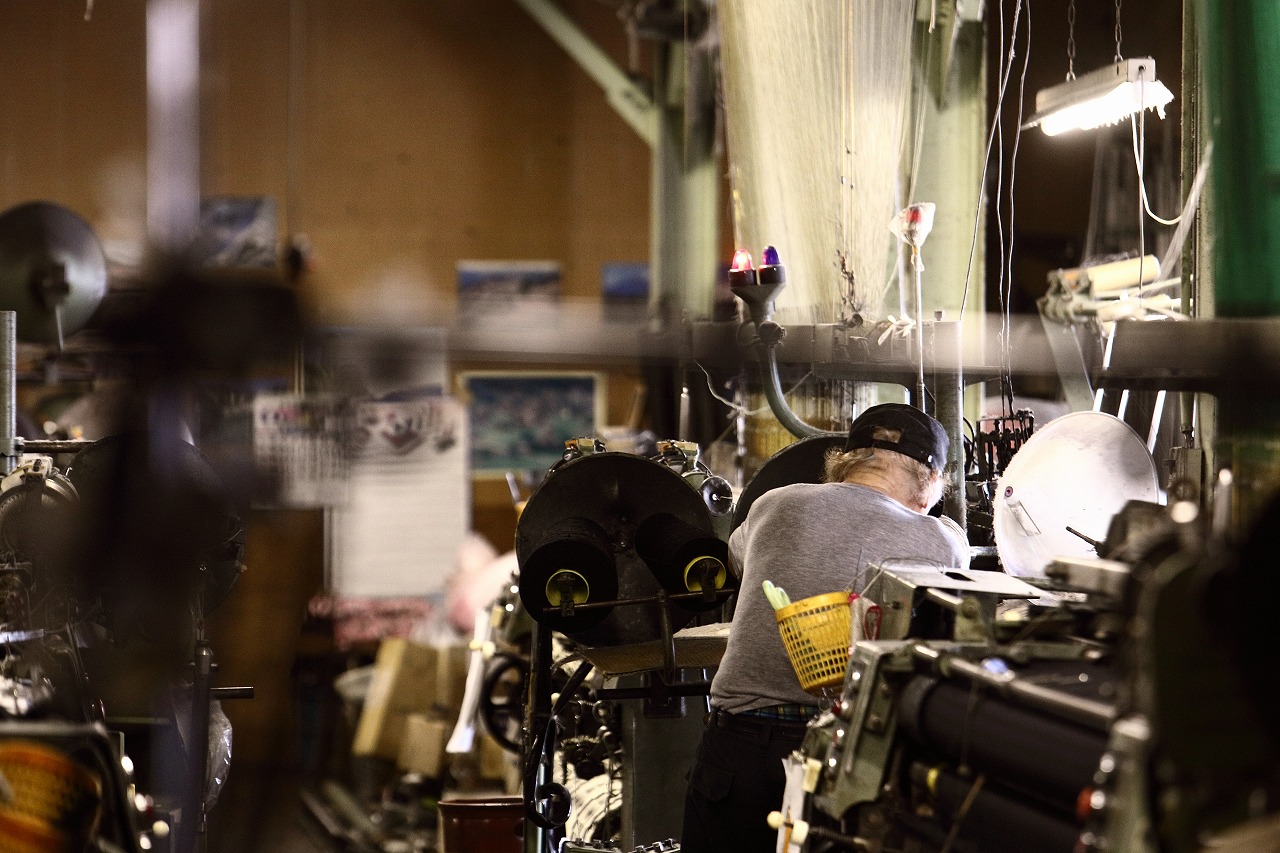
Finally……
Generally, in the industry, apparel makers make product samples for exhibitions. At the exhibition, they take orders from dealers and count the numbers of orders and judge if they should make the samples into products. In short, there may be some “drop” products which don’t go on to production, even though samples were made.
JELADO, on the other hand, since its establishment in 2004, has never dropped products -all the samples they make go into production. JELADO shows respect for the deep pride and massive amount of work of these manufacturers. JELADO takes responsibility for their projects and finishes them all.
Next, I’ll show how these wool fabrics are turned into other products. Don’t miss it!!
<Writer/Covo Tagata Photographer/Seiji Swada Translation/Kenny>














